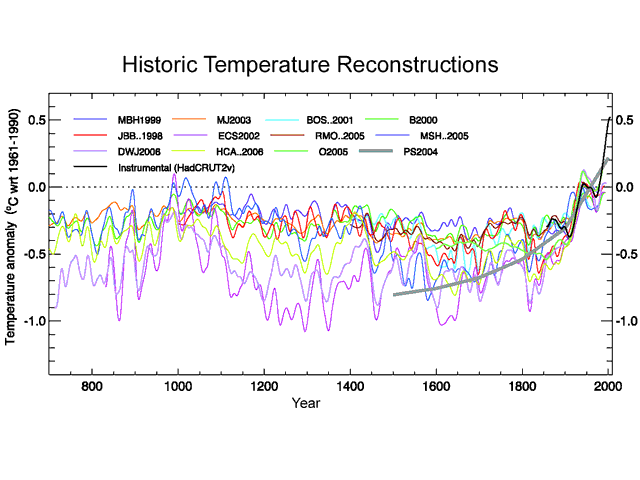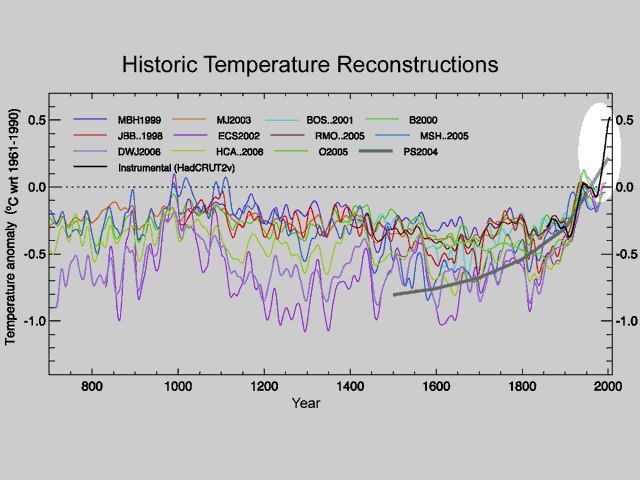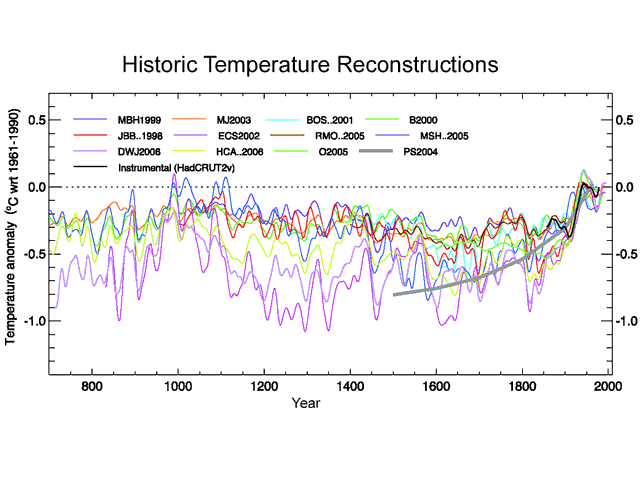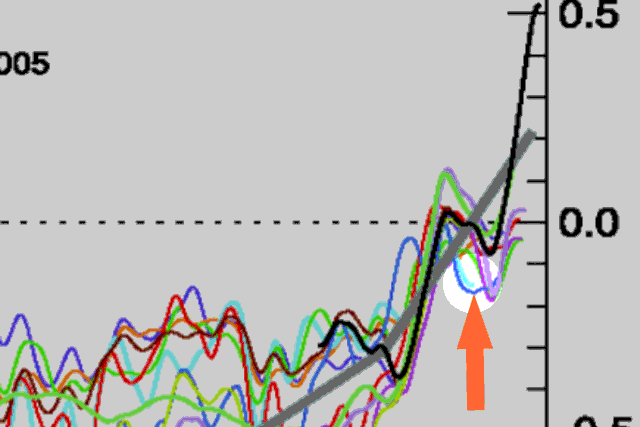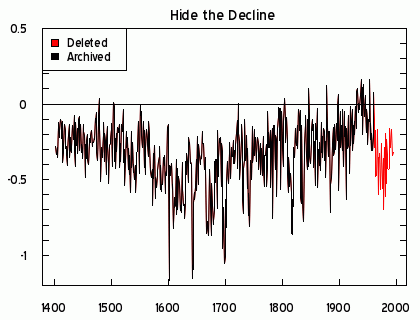I am disappointed to see folks like Lord Monkton calling for scientists to go to jail over what has been discovered in the Hadley CRU emails. No one is going to jail, at least based on what we know so far. Laws were broken, but of the type that perhaps people lose their jobs but not their freedom. And demanding that people go to jail just paints skeptics as opportunistic, over-the-top and vindictive. We sound like the looniest of the alarmists when we say stuff like this.
This is not to say that the emails (as well as the source code, which Steve McIntyre and his readers are starting to dig into) don’t give us useful insights about the climate science process. And what they really point to for me is the danger of a monoculture.
For years, with the media’s active participation, criticism of the mainstream scientific position on global warming has been painted as somehow outside the bounds of reasonable discourse. Skeptics are called “deniers,” with the intent to equate them with those who deny the Holocaust. At every turn, global warming activists with the help of the media, have tried to make it uncomfortable, even impossible, to criticize the science of catastrophic man-made global warming. In the extreme, this has degenerated into outright threats.
NASA’s James Hansen has called for trials of climate skeptics in 2008 for “high crimes against humanity.” Environmentalist Robert F. Kennedy Jr. lashed out at skeptics of 2007 declaring “This is treason. And we need to start treating them as traitors” In 2009, RFK, Jr. also called coal companies “criminal enterprises” and declared CEO’s ‘should be in jail… for all of eternity.”
In June 2009, former Clinton Administration official Joe Romm defended a comment on his Climate Progress website warning skeptics would be strangled in their beds. “An entire generation will soon be ready to strangle you and your kind while you sleep in your beds,” stated the remarks, which Romm defended by calling them “not a threat, but a prediction.”
In 2006, the eco-magazine Grist called for Nuremberg-Style trials for skeptics. In 2008, Canadian environmentalist David Suzuki called for government leaders skeptical of global warming to be thrown “into jail.” In 2007, The Weather Channel’s climate expert called for withholding certification of skeptical meteorologists.
The examples go on ad infinitum. Several folks have emailed me and asked why I have not joined the feeding frenzy over the “climategate.” In part, this is because I don’t think there is anything in the emails that is a whole lot worse than what many of the actors have been saying publicly. The media has played along not only because many of its members were sympathetic to the message, but because the catastrophe played well into the “if it bleeds, it leads” culture. Even when the media was not “picking a winner” in the science, it supported the catastrophist message in its editorial decisions, choosing to cover (for example) ad nauseum a 30-year low in Arctic sea ice but failing to even mention a 30-year high in Antarctic sea ice which occurred on nearly the same day (more here). Ditto hurricanes, tornadoes, floods droughts, etc — only events and records in one particular tail of the normal distribution were covered. Even when they worked to be fair, the media were frequently criticized by alarmists for allowing even a mention of the skeptic position in an article otherwise generally supporting the orthodoxy. The term “false balance” was coined.
The result was a group who were effectively exempt from criticism — and knew it.
The most amazing thing to watch has been the absolute scorn and obstructionism piled on Steve McIntyre and his readers and partners. I have read Steve’s work for years, and find it to be incredibly fair and deeply analytical. I took as one of my early roles at my climate site the explanation to laymen of exactly what McIntyre was talking about in his posts. He often challenged the climate orthodoxy – which in most scientific disciplines is highly valued, but in climate science is a crime. In the emails we even see scientists within the monoculture raising the exact same issues that they have blasted McIntyre for — apparently it is OK to raise such issues as long as 1) you are an insider and 2) such concerns are suppressed in any public document.
Perhaps the single most abusive part of the monoculture has been its misrepresentation of peer review. Peer review was never meant as a sort of good housekeeping seal of approval on scientific work. It is not a guarantee of correctness. It is really an extension of the editorial process — bringing scientists from relevant fields to vet whether work is really new and different and worthy of publication, to make sure the actual article communicates the work and its findings clearly, and to probe for obvious errors or logical fallacies.
Climate scientists have tried to portray peer review as the end of the process– ie, once one of their works shows up in a peer-reviewed journal, the question addressed is “settled.” But his is never how science has worked. Publication in a peer-reviewed journal is the beginning, not the end. Once published, scientists attempt alternatively to tear it down or replicate its conclusions. Only work that has survived years of such torture testing starts to become “settled.”
The emails help to shed light on some aspects of peer review that skeptics have suspected for years. It is increasingly clear that climate scientists in the monoculture have been using peer review to enforce the orthodoxy. Peer review panels are stacked with members of the club, and authors who challenge the orthodoxy are shut out of publication, while authors within the monoculture use peer review as a shield against future criticism. We see in the emails members of the monoculture actually working to force editors who have the temerity to publish work critical of the orthodoxy out of their jobs. We are now learning that when alarmist scientists claim that there is little peer-reviewed science on the skeptic’s side, this is like the Catholic Church enforcing a banned books list and then claiming that everything in print supports the Church’s position.
History teaches us that whenever we allow a monoculture – whether is be totalitarian one-party rule or enforcing a single state religion, corruption follows. Without scrutiny of their actions, actors in such monocultures have few checks and little accountability. Worse, those at the center of such monocultures can become convinced of their own righteousness, such that any action they take in support of the orthodoxy is by definition ethically justified.
This, I think, is exactly what we see at work in the Hadley CRU emails.

